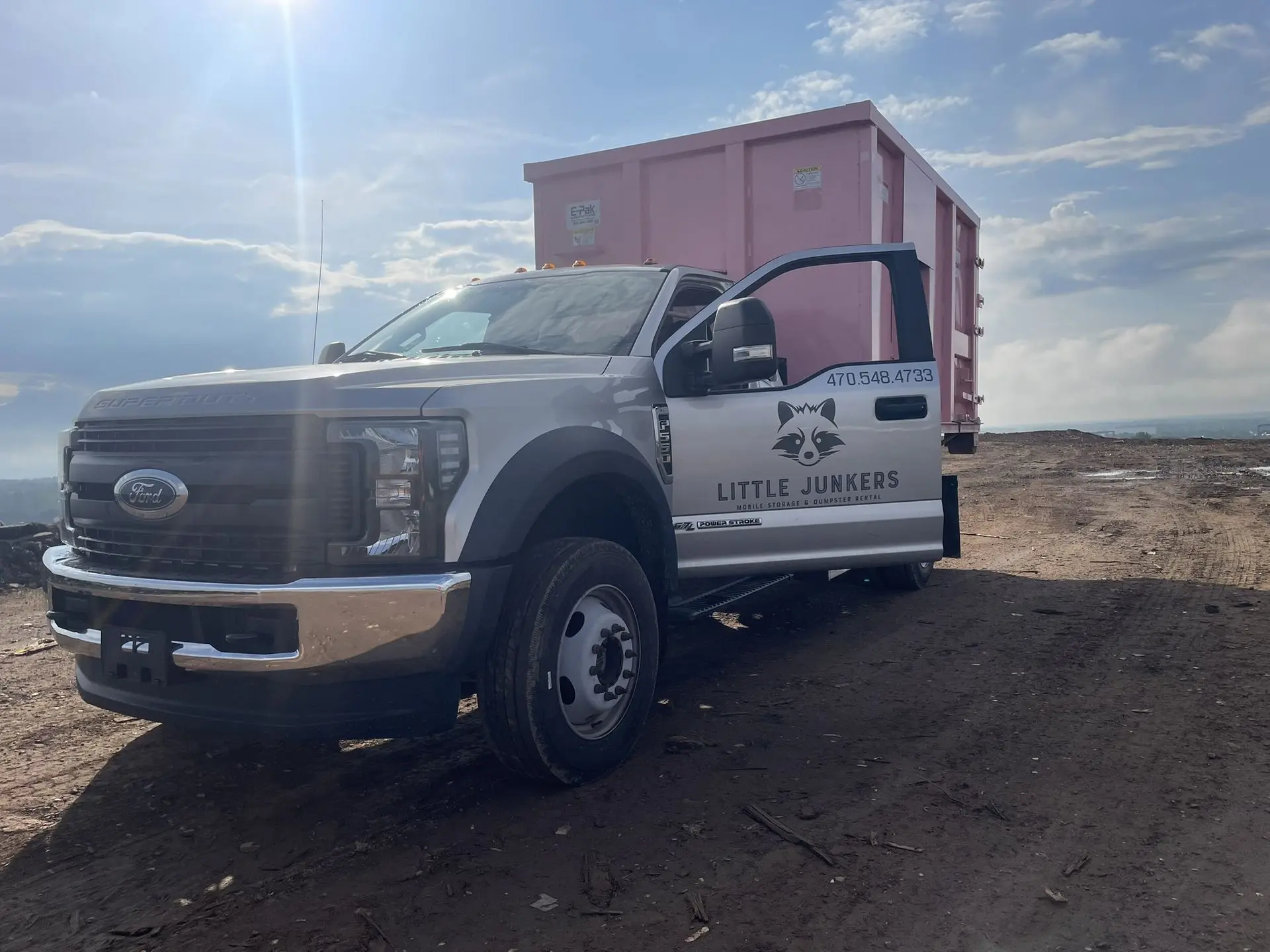Renting a dumpster can feel like a game of Tetris: how do you fit all your debris, junk, and renovation leftovers into that 16-yard box without making multiple hauls? At Little Junkers, we believe a little planning goes a long way in helping you save time and money. Here are five expert tips to help you stack, sort, and squeeze the most out of your dumpster rental—so you can tackle your project with confidence.
1. Sort Before You Toss
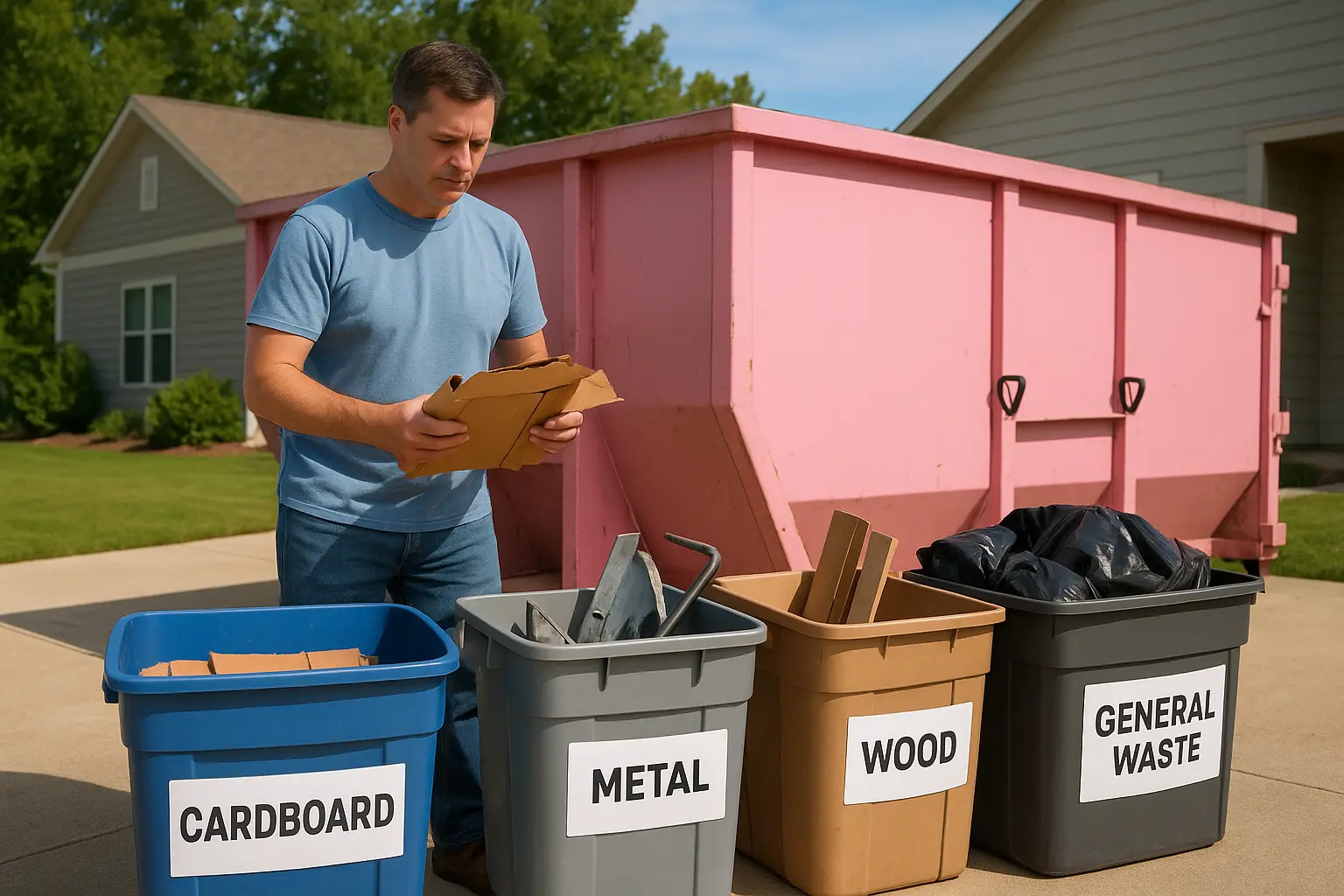
Why it matters: Mixing everything together wastes valuable space.
How to do it:
- Create “keep,” “toss,” and “recycle” piles before you start loading. Separating wood, metal, cardboard, and general trash allows you (or your junk service) to compact similar materials more efficiently.
- Bundle and break down bulky items like cardboard boxes, old furniture, and plastic piping. A flattened box takes up a fraction of the room compared to its assembled form.
Pro Tip: Tie up flattened cardboard with twine or packing tape so it doesn’t spring back open once it’s in the bin.
2. Load Heavy Items First
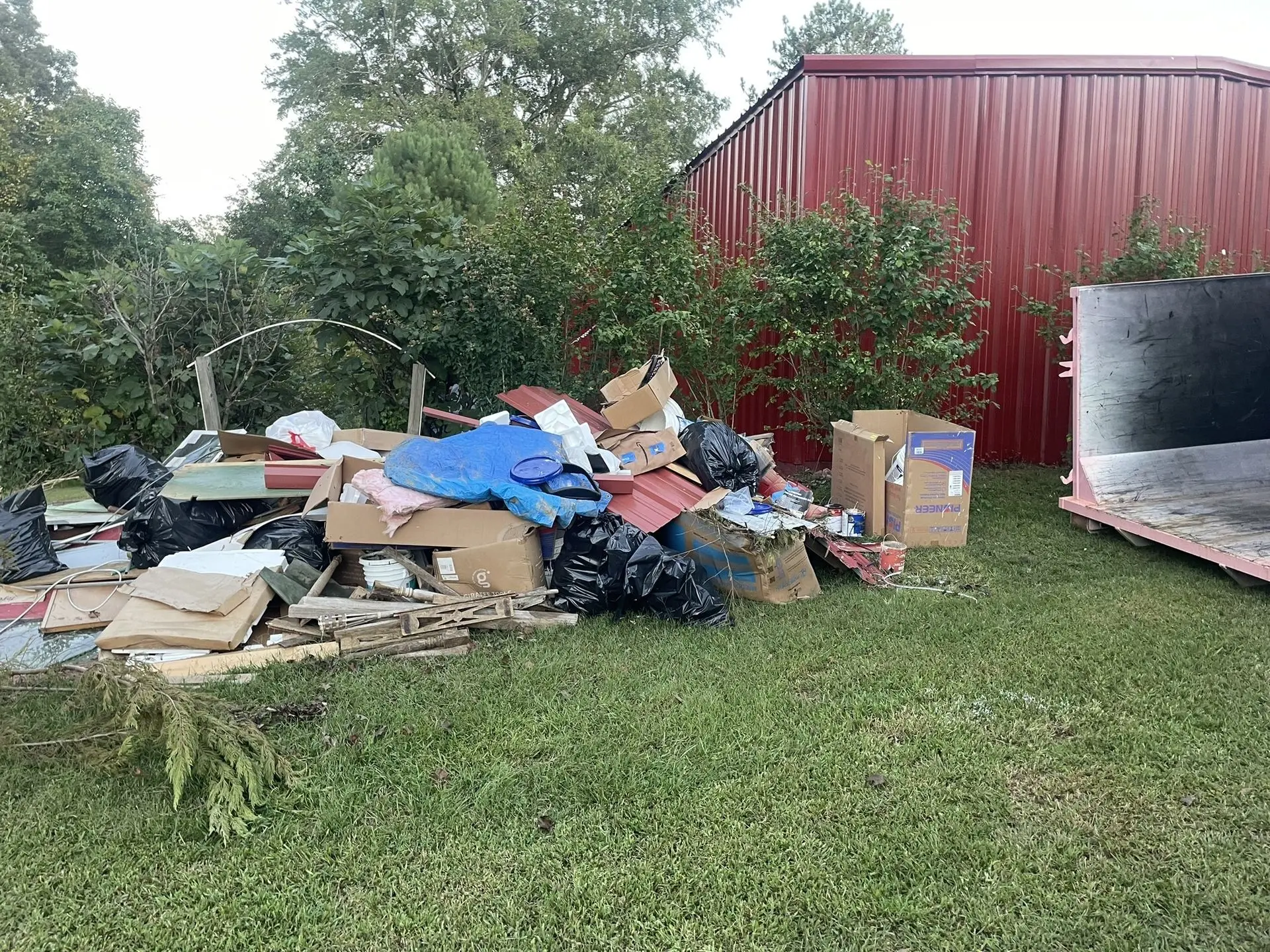
Why it matters: A stable base prevents shifting, makes stacking safer, and gives you better visibility as you work your way up.
How to do it:
- Place dense materials (concrete chunks, bricks, ceramic tile) at the bottom.
- Distribute weight evenly across the dumpster’s length and width to avoid an imbalanced load that’s hard to cover or haul.
Pro Tip: If you’re using a hook-lift dumpster like our Mighty Middler, ask our team to position it closest to your toughest debris pile—so you make fewer trips carrying heavy items.
3. Think Vertically
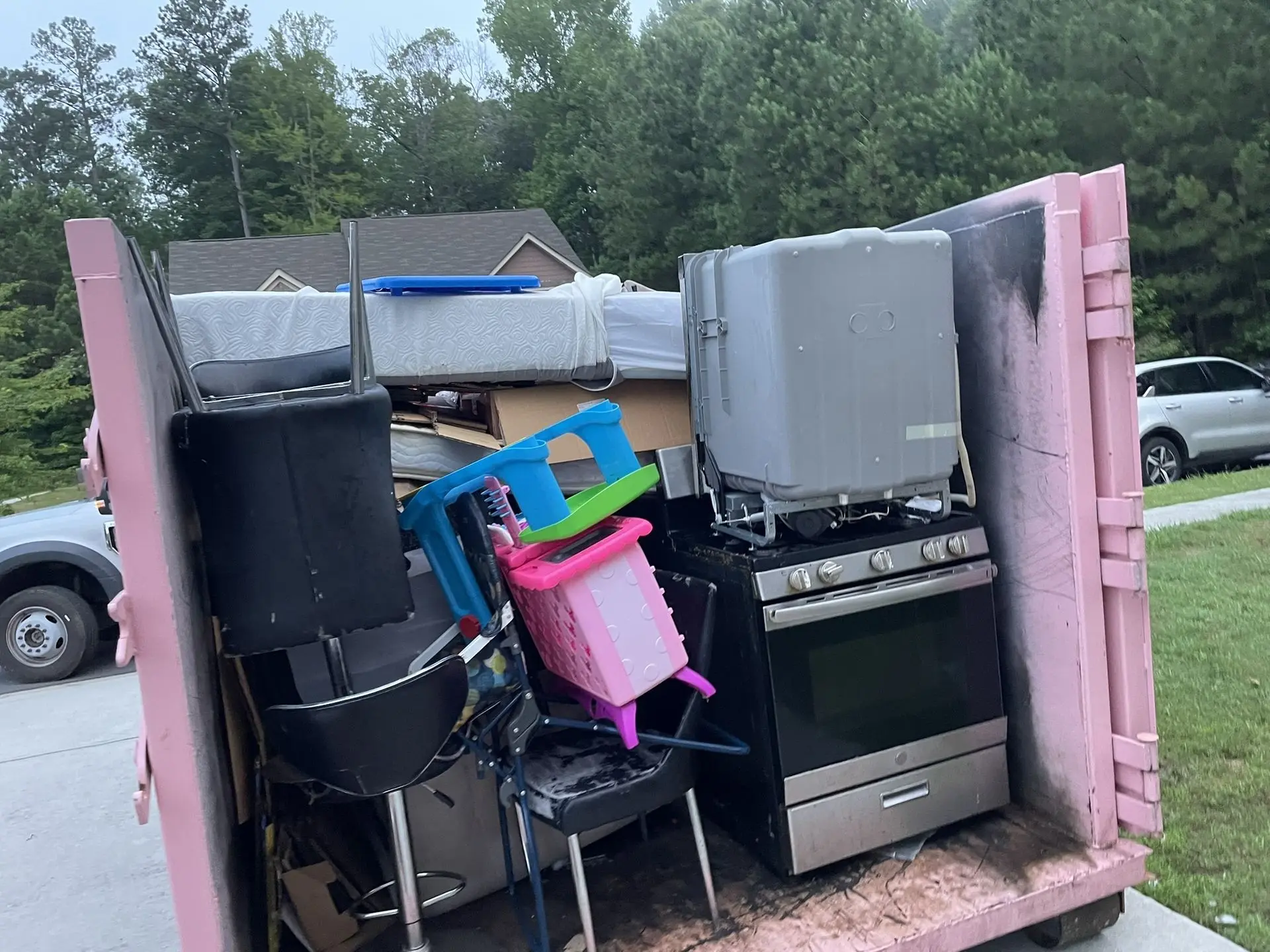
Why it matters: Floor space fills up fast—so take your project to new heights.
How to do it:
- Stack long, skinny items (lumber, PVC pipes, trim pieces) along the dumpster’s sides, vertical to the bottom.
- Stand up large sheets (drywall, plywood, paneling) along one wall rather than laying them flat.
Pro Tip: Lean boards against the back wall at a slight angle, so they don’t slide once you start filling around them.
4. Fill the Gaps
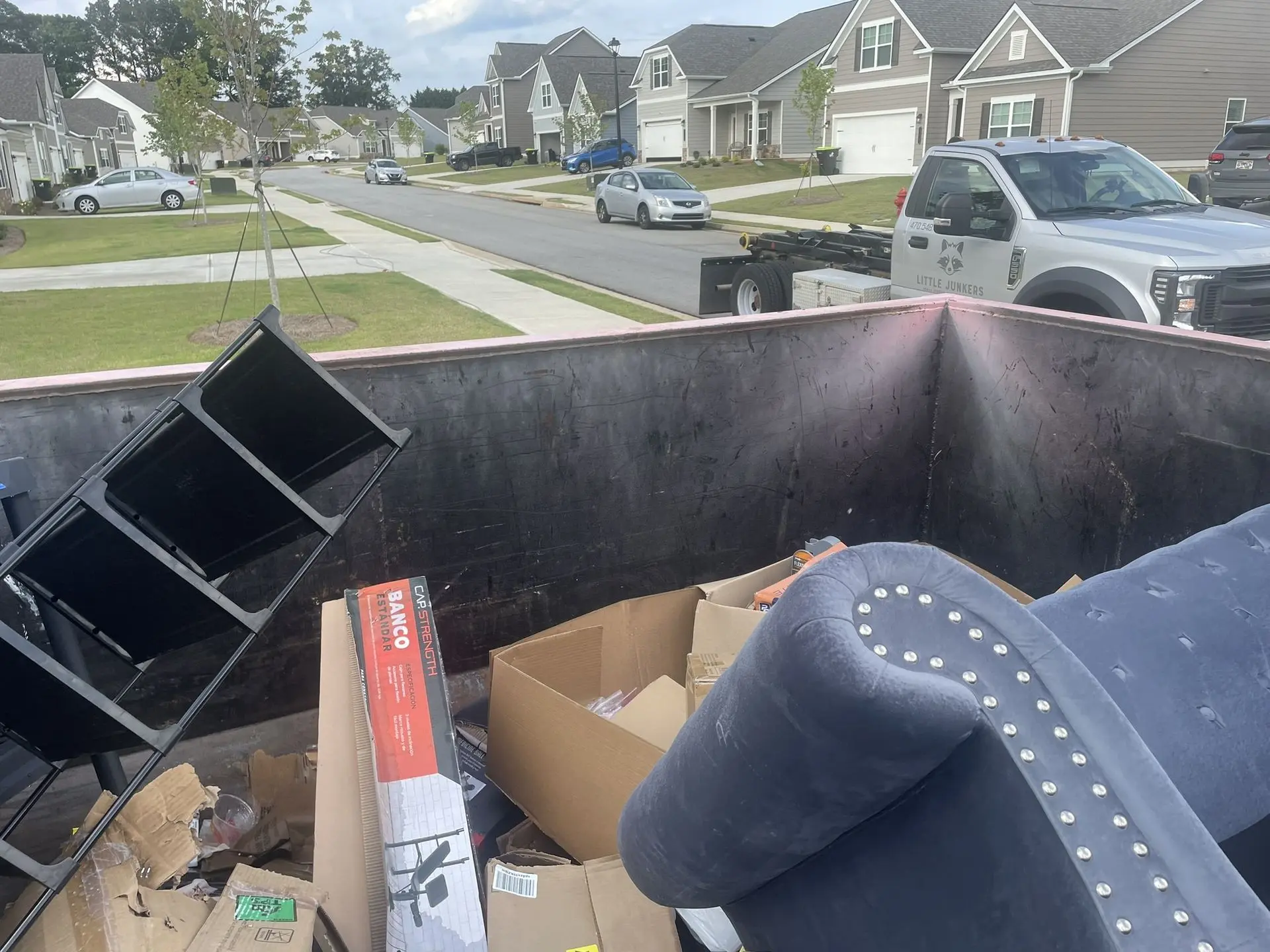
Why it matters: Small voids and odd-shaped spaces add up to big, wasted square footage.
How to do it:
- Toss in irregular scraps (off-cuts of wood, crumpled tarps, shredded insulation) after your major items are in place. They’ll wedge into pockets between larger debris.
- Compress soft materials (rugs, old clothing, carpet padding) down with a shovel or by hand to make them as compact as possible.
Pro Tip: Keep a shovel or push-stick handy to tamp down each layer—this will give you at least one more cubic yard of capacity!
5. Always Order a Larger Dumpster Than You Think You Need
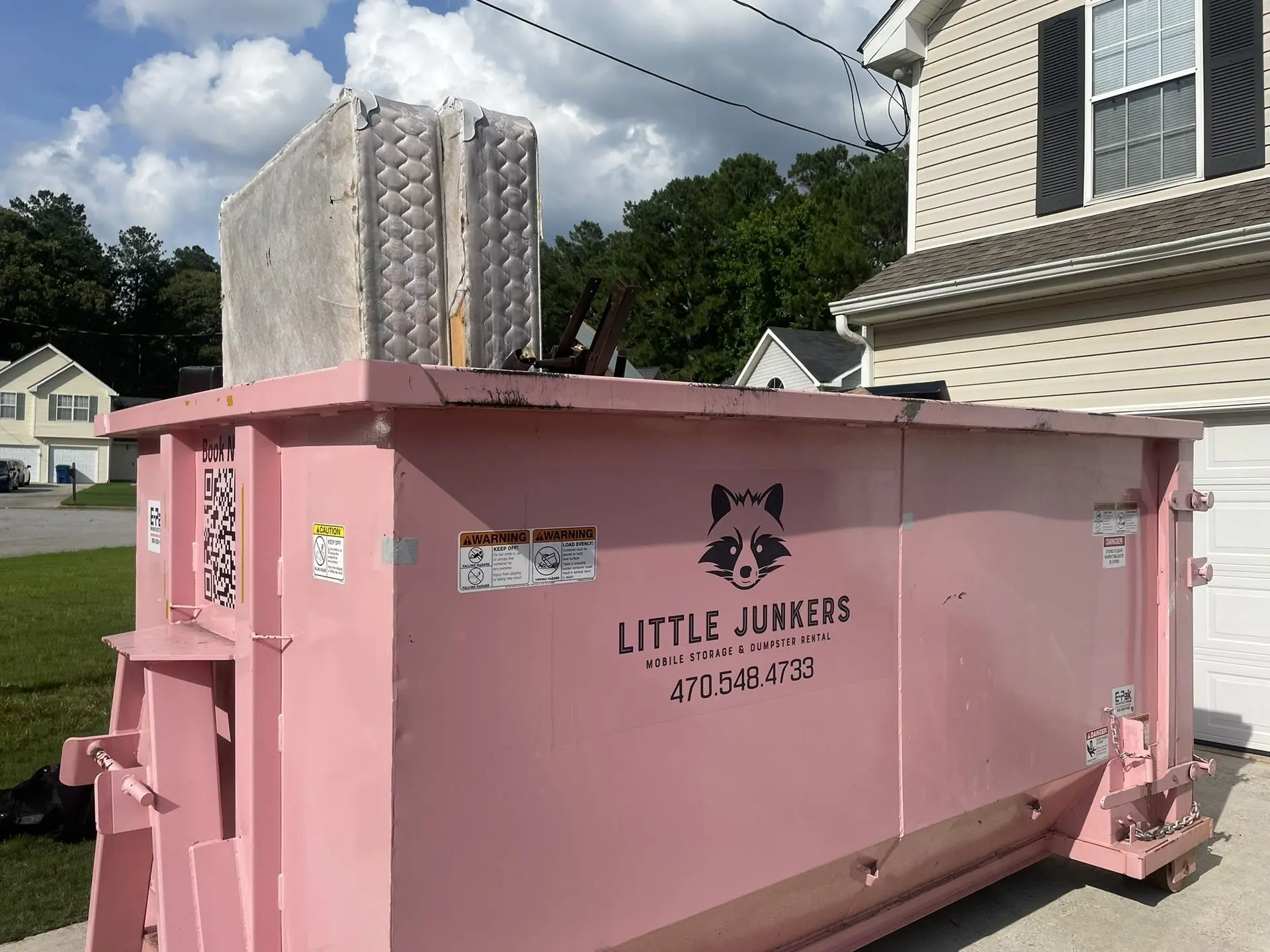
Why it matters: Underestimating your project size can lead to extra rental days, overage fees, and multiple hauls—adding time and cost.
How to do it:
- Add a safety buffer: If you’re on the fence between two sizes, go one tier up. That extra yardage can be a game-changer when surprise junk shows up.
- Factor in unexpected debris: Renovation projects often reveal hidden waste—old flooring, insulation, or structural scraps you didn’t plan for.
Pro Tip: Chat with our team about your scope and timelines. We’ll recommend the right dumpster size so you never have to scramble for a last-minute swap or overflow fee.
Wrapping Up
With a little foresight and these five space-saving strategies, you’ll maximize every cubic foot of your rental—and avoid the headaches (and hidden costs) of running out of room. Whether you’re clearing out a basement, renovating a room, or tackling a full home cleanout, these tips will help you minimize trips, trim costs, and complete your project stress-free.
Ready to book the perfect size?
👉 Reserve your Mighty Middler 16-yard dumpster (or go bigger!) today and see why Little Junkers is the go-to for efficient, customer-focused waste removal.
📞 Call us at 470-548-4733 or visit littlejunkersllc.com to secure your dumpster in minutes.
Happy loading! 🚀
